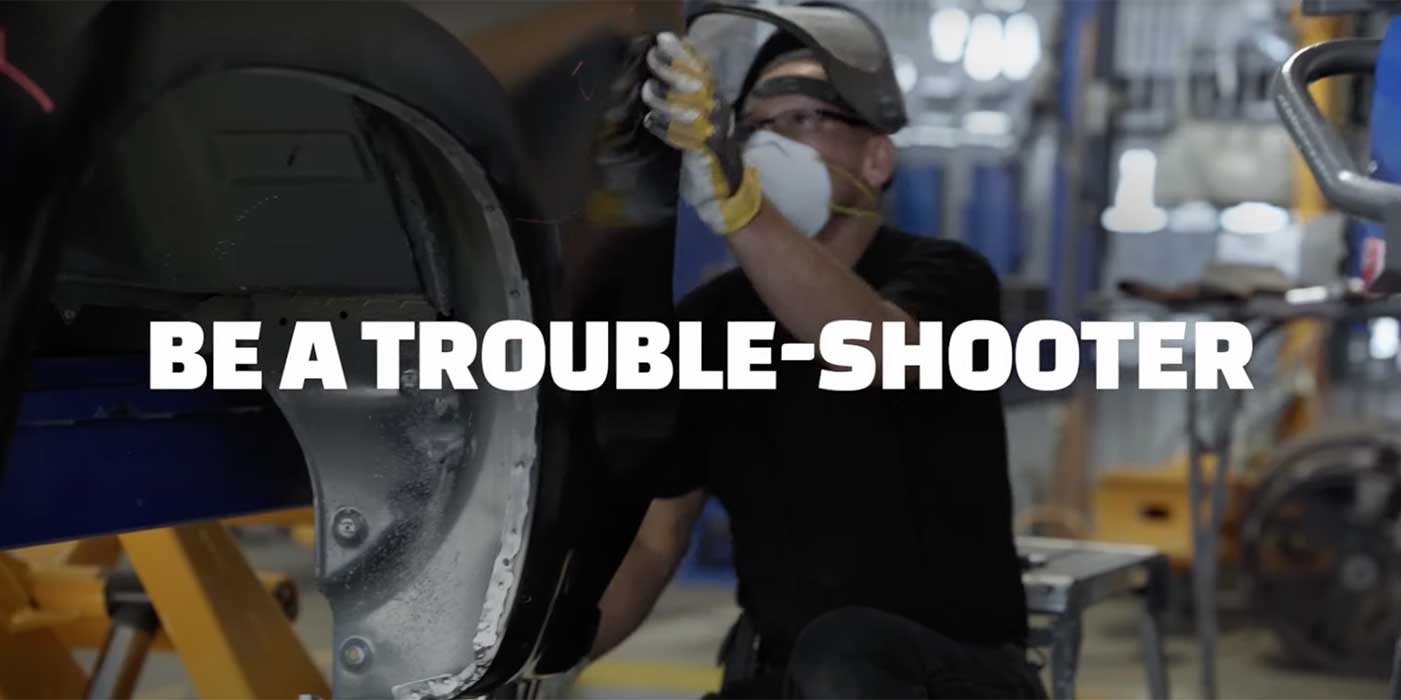Ladies and gentlemen, please return your trays to their upright position and buckle up, as we’re in for a rough ride due to some turbulence ahead.”
Just like there have been many changes in the collision repair industry, there have also been many changes in the way insurers conduct themselves … and the changes continue.
As I’ve written before, based on the negative effect of technology changes in today’s vehicles, the impact of COVID (still being felt today as far as interruption of the supply chain and the rising costs of goods and services) and the economy, insurers are experiencing significant increases in claims costs and thus decreasing profits. As a result, insurers are doubling down on their aggressive efforts to reduce claims costs.
As in any basic business plan, ever since commerce came to be in the early centuries of trade, the goal has been to increase sales and decrease costs. If you succeed in doing this, you’ll earn more profit. Achieving this without a loss in quality and service is icing on the cake.
On the other hand, when business as usual is no longer sustainable due to economic pressures (loss in profitability), the business must make the necessary changes to ensure the company’s viability. This often results in businesses seeking ways to lower their costs as a stopgap effort to stave off further losses.
Insurers are no different, and unless you’ve been living under a rock over the past two years, you’ve no doubt experienced additional pressures by insurers to reduce their claim settlements relative to repairs and what’s being denied.
Insurers are now denying or refusing to provide procedures, parts and materials they had not previously objected to. This includes things like pre- and post-repair scans, calibrations, alignments and an increase in the call for alternative parts. To make matters worse, the rates and allowances insurers once agreed to are being reduced to the point where repairers are now suffering from a loss in profit.
A Problem
One of my clients called me the other day to discuss a problem one of his customers was experiencing with a large national insurer. The customer had brought in a 2014 Jetta SportWagen that had struck a large rock in the roadway that damaged the lower radiator support tie-bar. Neither the repairer nor the insurer were able to find a replacement for this part, as it was on Volkswagen’s national backorder with no release date. When pressed by the repairer, who had the vehicle in storage accruing daily charges, the insurer stated it had decided to simply pay the price of the part and close the file — even though the part was not available and the vehicle could not be repaired in the foreseeable future.
If you always do the right things in the right way for the right reasons, you should have the ability to defend yourself should the need occur.
While I’m certainly no attorney, based upon my knowledge, training and experience as a state licensed adjuster, shop owner/manager and consultant to repairers, consumers and insurers, I understand that it’s the insurer who determines if the damages are part of the covered loss and, if it determines coverage applies, has three basic choices to resolve the claim:
- Make the repair. This means it takes possession of the damaged property and makes all arrangements to have it repaired at its own cost. This is something insurers will likely never do due to the potential liabilities they would no doubt incur.
- Pay the full cost of repair.
- Provide sufficient payment to replace the property with a comparable replacement.
While I don’t believe an insurer has the right to settle the claim based on a repair that cannot be performed, it is my non-legal opinion that, if the necessary parts to repair the vehicle are not available and repairs cannot be made, the vehicle should then be determined to be a constructive total loss and settled as such.
At the time of this writing, there has been no resolution to my client’s problem. He encouraged his customer to have the damaged vehicle moved from his shop to the customer’s residence to mitigate further storage fees. The customer will seek assistance from the local agent and seek legal counsel if necessary.
Weaponizing the Legal System
Another important issue of late is insurance companies weaponizing the legal system to seek recovery from repairers for charges they paid to the repairer and then determined to be overcharges and merely paid under protest. In certain cases, insurers are demanding that they be reimbursed by repairers for charges assessed and paid for, and if the repairer fails to pay, they’re being sued by the insurer for overcharging, unfair and deceptive business practices, improper and excessive charges, and more. The repairer is then confronted with the undesirable choice to either pay the insurer to make the matter go away or seek legal counsel to defend itself from such actions and hopefully stop the insurer and others from similar actions in the future, both of which will no doubt be costly.
Now, the repairer is confronted with several choices: Change its billing practices to avoid similar attacks in the future or strengthen its internal policies and procedures to help protect itself from being susceptible to such activities by insurers and/or local law enforcement who may become involved due to insurer-levied complaints. Either choice will again be costly and place the repairer in a position to expend funds it hadn’t planned on. The only viable long-term option, if it has sound policies and procedures in place and abides by them, would be to defend itself and combat the insurer’s efforts.
Investigation
In another incident, a repairer was advised it were being investigated for its business practices by its local state attorney general’s office regarding consumer fraud and deceptive business practices. When the repairer investigated the matter, it learned that it was its state’s department of insurance that notified the state attorney suggesting an investigation of the repairer. Further investigation revealed that the commissioner’s office had no complaints regarding the shop but rather had numerous complaints from consumers about various insurer practices involving vehicles being repaired at that shop. The consumers filing the complaints had no issues with the repairer but with the way the insurers failed to provide adequately for repairs (parts, materials, labor hours and rates). The presumption was that, because of the numerous complaints against various insurers, all of which involved this repairer, the commissioner was advised that it was the repairer’s fault, which led to the ensuing notice to the state attorney’s office suggesting an investigation of the repairer. In the end, the state attorney found no wrongdoing on behalf of the repairer. The repairer is now trying to arrange an audience with the insurance commissioner’s office to clear the air and alert it to what is really going on so the investigation can continue.
What to Do
So, as insurers double down on their efforts to reduce costs to remain profitable in light of the troubled economy and supply chain debacle, what is a repairer to do to avoid such issues and liabilities? It’s important to understand that it could happen to you and that you can’t stop bad people from doing bad things. However, you can take steps to deter those bad people from doing it to your company:
- Have a well-crafted and valid repair authorization and contract in place that meets your state’s rules, regulations and guidelines — and equally important is to have each customer acknowledge, sign and date it.
- Educate your customers to ensure they fully understand what you’re recommending for proper and thorough repairs and why. This might include providing them with copies of recommended repair procedures, handouts, P-page information and vendor warranties (e.g., paint finish).
- Keep your customers apprised of all activities involving their repair and interactions with the responsible insurance company.
- Document the repair file as to all interactions with the customer and the insurer.
- Not have the repairer’s name on the instruments of payment (drafts, check, electronic transfer, etc.) issued by the insurer. The goal is to avoid any inference of a contract or agreement between the repairer and insurer. Keep it between the repairer and the repairer’s true customer, the vehicle owner.
- Understand there is no one labor and/or material rate in your market area. You determine what your rates and allowances are as needed for your company based on the level of quality workmanship and warranties provided. You can be the least costly or the most expensive in your market as there is a range of pricing. I encourage repairers to prepare a report showing how you determine your rates, charges, storage, markups, etc., in the event they’re ever challenged.
- Make sure your company’s policies, procedures, position and mission statements are clearly written and shared with your staff so there is no mistaking your commitment to the highest levels of quality and service to your customers. This will solidify your standard practices and enable consistency in day-to-day activities.
In short, if you always do the right things in the right way for the right reasons, you should have the ability to defend yourself should the need occur. If you do what is needed, you may not have the need to defend yourself or your shop.
This is a great time to be a quality-oriented repairer in the collision industry who does things properly, so hang on and be prepared — it’s going to get even rougher in the months and years ahead for some!














